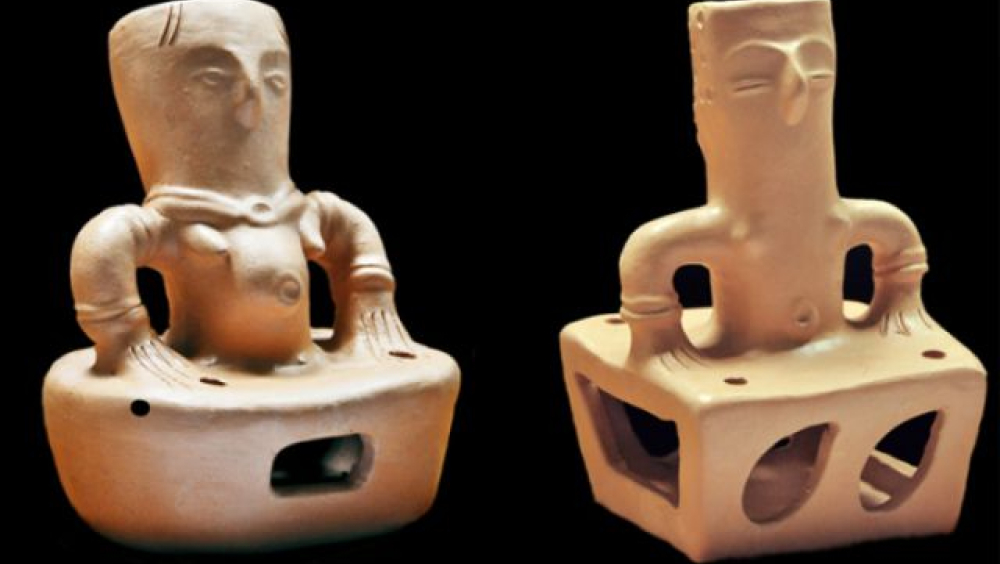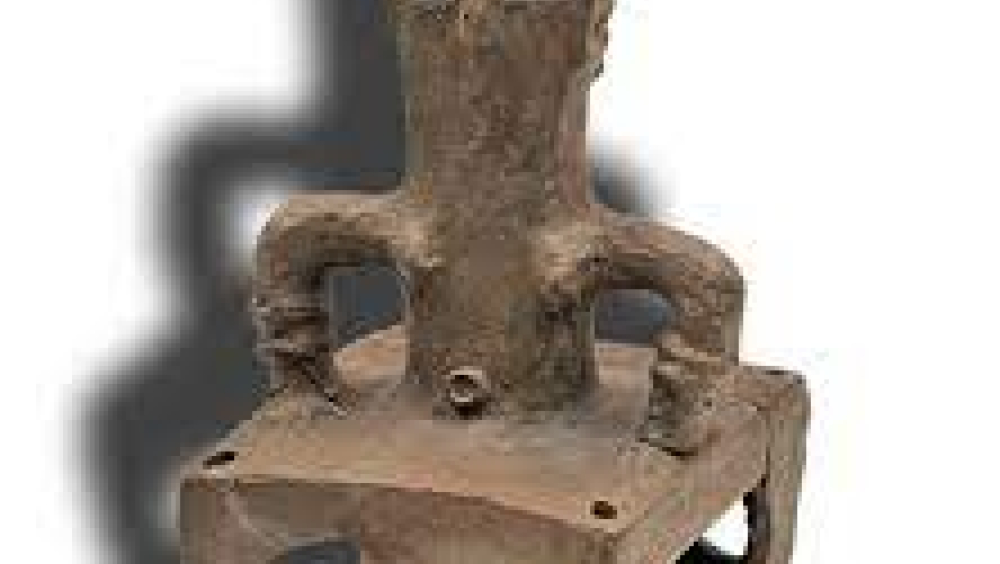Once upon a time there was the Great Mother
Summary:
The two found ceramic figurines (altars) in Govrlevo and Tumba Madzari near Skopje, are an excellent opportunity to spread the cultural position of this area, in the wider context of the European cultural heritage, through which the wide possibilities of human talent in this area are reached and revealed. to shaping and thereby sending messages to future generations, messages that the Great Mother is the mother of all people, and what we see in her is not only a wonderful metaphor for life but, in general, for existence.
Give us a brief description of your story:
The two discovered ceramic figurines of the Great Mother dating back to 8000 years, in the Neolithic period, are equally similar or identical in the figures, but different in names are extremely important not only for European cultural heritage but also in the wider world cultural heritage (Gea, Hera, and Demetra, among the ancient Greeks, Izida among the ancient Egyptians, Isidora among the ancient Assyrians of Babylon). In all of them, the meaning is exactly the same, and it comes down to the birth and birth of one, and the preservation and survival, but also the continuation of each family in time and space for the second.
From the above, quite clearly and unequivocally emerges the following conclusion: regardless of the centuries, people not only in Europe but in all earthly areas, live, create/exist and exist as a human race by being the creator of their creation. Especially since these positive achievements of the Great Mother today and in eternity, will always be relevant and inspiring ... Why they celebrate life ... And Europe and its cultural heritage, in the best way shows, confirms, and affirms everything it is in the interest of those who come after us. After all, it is most important for all previous and all future civilizations: home/family, family, and survival ...
It was once the Great Mother who distributed it to her and to all who wished to take her eternal fire of existence, passing through vast European spaces from east to west and from north to south (in all those 8000 centuries BC) from the Neolithic to until today. The Great Mother, found as a ceramic figure (in two different sizes, and quite close in appearance) in Govrlevo and in Tumba Madzari in Skopje, most eloquently confirms the eternal that: The Great Mother is grounded in beautiful women, in brave women, in women martyrs, in the suffering women, in the women goddesses, in the women-women ... Without the Great Mother, the world would not be as big and as beautiful as it is now ... With the existence of the Great Mother, her body (of the two discovered ceramic figurines) is represented in height, because it is the first modern view (from a lower perspective) of every newborn child (life extension), and its lavish body position (upper perspective), in turn, is placed in a dual role to protect the house, which is transmitted through the symbol of the chimney and, to fertilize the light that enters through it as a sign of life and is reflected in the openings of the two figurines. In fact, from the Great Mother, the Holy Trinity begins to be defined, as the spiritual benefit of all people ... So, with the existence of the Great Mother (expressed by different names in the languages of the peoples of the world), it is that periostin, that initial stub, and amalgam which means: the mother as primordial (instead of the father), the daughter (instead of the son and the procreation) and the fetus/child (instead of the Holy Spirit). These sacrificial figures were commissioned and embedded in the foundations of every house that was built, with one thought and desire and the building and those who will live in it to bridge it and prove that with the Great Mother, there is new hope. It is the true seal of the existence of life and the world.
The story of the Great Mother contains the following lavish interactions: to be interesting enough for tourists and archaeologists, ethnographers, ethnologists and anthropologists alike, and the story itself is serious, which can no longer be, for the simple reason that in it reveals and tells us our life, simply every single and common family, and it is fun with the very fact that the figurines of the Great Mother, give the opportunity for different interpretations of what is seen on them to the enigma that even those figures hide secrets while they were with centuries underground, and s .... is reflected in the very fact that the figures remained underground, did not disappear for a century and a century, to defy genetics (human body and its appearance) and ... (after the originality of the workmanship and, the metaphors indicated on them). Finally, if one appreciates what is seen and known, then the general conclusion that this preserved cultural heritage in our country is so original that we would like every nation to have it is unnecessary and there is no doubt. But, the good thing is that they also have such figurines of their goddesses ...
The existence of the figurines-goddesses of the Great Mother, show in themselves that in the Macedonian, Balkan and European geographical area, the peoples through their traditions and miraculously beautiful stories, which comparatively viewed on the topic of the Great Mother are "identical", because in their basis and in their ultimate goal is to present the most essential pan-European nature of heritage (this is more than certain and can be seen in action throughout Europe), the Great Mother is a striking example through which the anatomy of the cultural-civilizational and artistic life of European peoples, enriched through the centuries, related to the basic preservation and continuation of the family through the Great Mother (which is an example of prominence for all European peoples in general and individually), which means intertwining and enriching each environment and ethnicity in common benefits and European values, which especially in this 21st century should be strongly and dedicatedly emphasized as a common good for the international community mutual understanding, which as an interaction leads to unification / interaction. The Great Mother is an interactive figure-goddess in the best sense of the word, and her presentation is more than welcome for every culture and every cultural heritage: ours and European.
Goals
-Encouraging the interest of children and students, curiosity for learning and research on relationships and events in the environment, and parents enriching their knowledge of our cultural heritage as part of the European cultural heritage.
-Editing and expanding the child and parenting experience
-Introduction and understanding of new topics, subjects, subjects, institutions, manifestations, events, personalities, about the life and work of people in the past and present
-Emphasizing the importance of caring for one's own and general human historical and cultural heritage
-Expression of feelings, experiences, thoughts, through democratic procedures arising from the knowledge of the past through the cultural heritage
-Animation of the others in the environment in which the kindergarten and the school operate, necessary publicity for the program activities.
The realization of the project will take place
- in the kindergarten with the children from the large groups;
- in the primary school in the 5th grade
-with the parents of the children from the kindergarten and the primary school.
- visit of the children from the kindergarten and the primary school of the Archaeological Museum in Skopje;
-use of brochures, books, pictures, and texts from different sources;
-making souvenirs:
-making drawings, magnets, cups, and dolls;
- workshops for making the figures of the Great Mother will be realized;
The parents of both groups will participate in some activities, with special emphasis on the existence and presentation through the various programs of the European Days of Cultural Heritage in RNM.
- an exhibition of the made figurines and drawings will be organized and,
- A booklet book dedicated to this activity will be published within the European Days of Cultural Heritage and its promotion in the kindergarten and the primary school in RNM.

